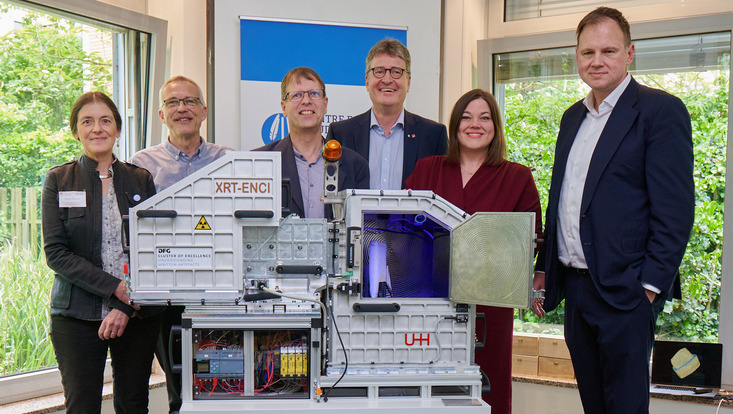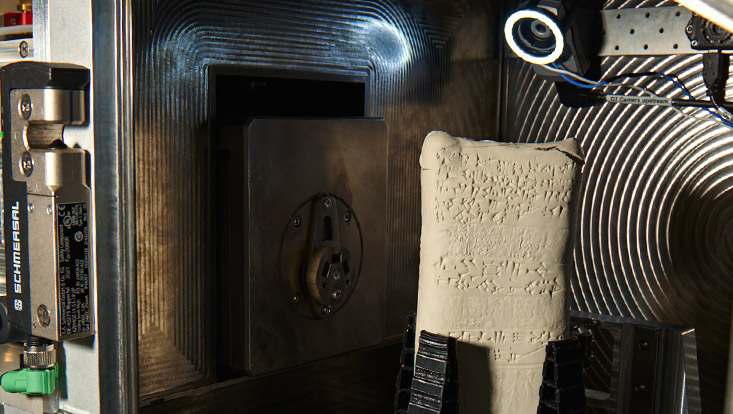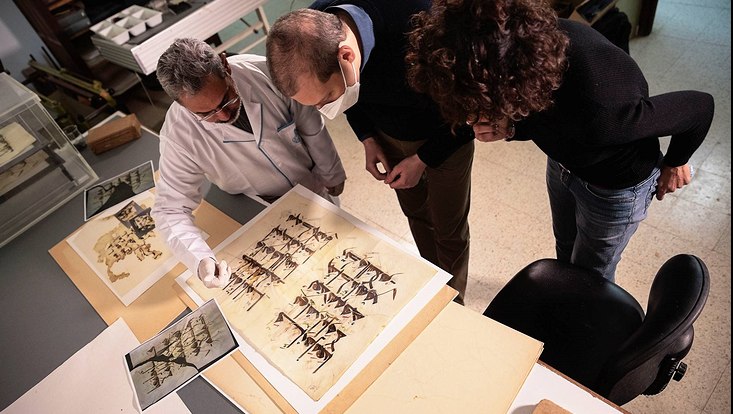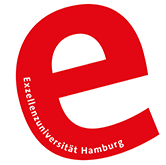Presentation after first use in the LouvreX-Ray Insights in Old Clay Envelopes
2 May 2024, by Dr. Jakob Hinze

Photo: UHH/Karsten Helmholz
On 29 April 2024, in the presence of Hamburg’s science senator Katharina Fegebank and Professor Dr. Hauke Heekeren, researchers at Universität Hamburg and DESY presented the ENCI computer tomograph, the only one of its kind in the world, that allows ancient clay tablets to be read.
Even simple and mundane daily objects like an envelope can have a fascinating story. According to legend, it was invented by King Ur-Zababa who was eying the fortune of his confidant, Sargon, with growing concern. Sargon was considered a favorite of the gods, and Ur-Zababa feared he held intentions for the throne. That is why Ur-Zababa sent Sargon to personally deliver an important message to the King of Umma. This was written in cuneiform on a clay tablet, which was protected from its courier’s sight by a clay envelope. Without knowing it, Sargon was carrying his own death warrant to the King.
Today, more than a million cuneiform tablets are stored in museums and archives around the world. Thanks to their remarkable durability, they can provide us with valuable information about daily life in antiquity. However, many of these written artifacts have retained their secrets over thousands of years because they are still enclosed in clay envelopes. They cannot simply be opened, for both practical and ethical reasons: the envelopes themselves are valuable historical artifacts, and the objects as a whole are so fragile that the act of opening the envelopes may destroy the contents.
A lightweight at 400 kilograms
Researchers from the Cluster of Excellence Understanding Written Artefacts at Universität Hamburg and the Deutsches Elektronen-Synchrotron (DESY) have therefore developed the world’s only transportable computer tomograph, the result of many years of collaboration, that allows us to look inside the clay tablets for the first time in a non-invasive way. As 400 kilograms, ENCI—for “Extracting Non-destructively Cuneiform Inscriptions” and reference to Enki, a Sumerian god—is a lightweight compared to other tomographs of similar performance which usually weigh in at multiple tons. Researchers can therefore use ENCI as a mobile device, and examine the cuneiform tablets in the museums and archives where they are held. That is important, as these valuable objects usually cannot be transported.
ENCI was first used in February this year at the most famous museum in the world, the Louvre in Paris, where researchers from Hamburg examined 12 sealed contractual documents. An image of 18 billion voxel (volume pixel) was created for each tablet, with is about one hundred time the number of scans commonly used in medical research. Thanks to the complex imaging data that ENCI delivered, participating computer scientists were able to generate high-resolution 3D reconstructions of the tablets, which could be printed to produce true-to-original 3D copies. Antiquities researchers could therefore not only read the previously unseen texts for the first time, but also glean new insights into the tablets themselves, for example, differences in the composition and processing of the clay in different parts of the Mesopotamian empire.
Role-model for interdisciplinary research
Back in Hamburg, the project leaders, Assyriologist Cécile Michel, X-Ray physicist Christian Schroer, and computer scientist Stephan Olbrich described the development from the first sketches to the operational tomograph. The invited guests included science senator Katharina Fegebank and University president Prof. Dr. Hauke Heekeren. Both emphasized the exemplary character of the project for interdisciplinary research in the Excellence Cluster Understanding Written Artifacts (UWA), that focuses its research on the materiality of written artifacts, and thus brings together expertise from the humanities, natural and computer sciences. Against this background, UWA spokesperson, Prof. Dr. Konrad Hirschler highlighted the special significance of the collaboration with DESY for the cluster of excellence. Alongside the ENCI project, multiple joint pilot projects are currently being conducted, with additional projects being planned.
ENCI’s next deployment has already been decided. It is intended to take it to Ankara, Turkey, later this year, to investigate some of the large number of sealed letters that seem particularly promising for research. Prior to this, Hamburg residents have the opportunity to see the tomograph with their own eyes: on 1 June it will be on show at the Science City Day, from 11 am to 7 pm in the FLASH seminar room on the DESY premises (Building 28c).



